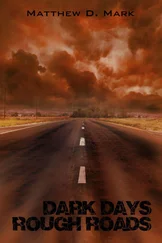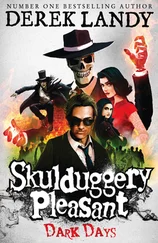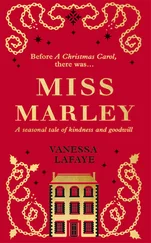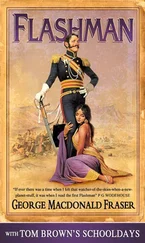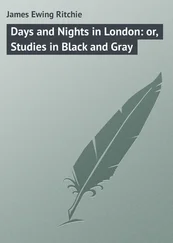Published by COLLINS CRIME CLUB
An imprint of HarperCollins Publishers Ltd
1 London Bridge Street
London SE1 9GF
www.harpercollins.co.uk
Dark Days first published in J.W. Arrowsmith’s Christmas Annual 1884
Published by The Detective Story Club for Wm Collins Sons & Co. Ltd 1930
Much Darker Days first published by Longmans, Green & Co. 1884
Introduction © David Brawn 2016
Cover design © HarperCollins Publishers Ltd 1930, 2016
A catalogue copy of this book is available from the British Library.
This novel is entirely a work of fiction. The names, characters and incidents portrayed in it are the work of the author’s imagination. Any resemblance to actual persons, living or dead, events or localities is entirely coincidental.
All rights reserved under International and Pan-American Copyright Conventions. By payment of the required fees, you have been granted the non-exclusive, non-transferable right to access and read the text of this e-book on screen. No part of this text may be reproduced, transmitted, down-loaded, decompiled, reverse engineered, or stored in or introduced into any information storage and retrieval system, in any form or by any means, whether electronic or mechanical, now known or hereinafter invented, without the express written permission of HarperCollins.
Source ISBN: 9780008137748
Ebook Edition © October 2016 ISBN: 9780008137755
Version: 2016-08-25
Table of Contents
Cover
Title Page
Copyright
Introduction
Dark Days
Dedication
Editor’s Preface
Chapter I: A Prayer and a Vow
Chapter II: A Villain’s Blow
Chapter III: ‘the Wages of Sin’
Chapter IV: At All Cost, Sleep!
Chapter V: A White Tomb
Chapter VI: The Secret Kept
Chapter VII: The Melting of the Snow
Chapter VIII: Flight
Chapter IX: Safe—and Loved!
Chapter X: The Sword Falls
Chapter XI: Special Pleading
Chapter XII: Tempted to Dishonour
Chapter XIII: The Last Hope
Chapter XIV: The Criminal Court
Chapter XV: The Black Cap
Chapter XVI: ‘Where Are the Snows That Fell Last Year?’
Chapter XVII: Clear Skies
Much Darker Days
Preface
Preface (Revised Edition)
Chapter I: The Curse (Registered)
Chapter II: A Villain’s by-Blow
Chapter III: Mes Gages! Mes Gages!
Chapter IV: As a Hatter!
Chapter V: The White Groom
Chapter VI: Hard as Nails
Chapter VII: Rescue and Retire!
Chapter VIII: Local Colour
Chapter IX: Saved! Saved!
Chapter X: Not Too Mad, but Just Mad Enough
Chapter XI: A Terrible Temptation
Chapter XII: Judge Juggins
Chapter XIII: Cleared Up (From the ‘Green Park Gazette’)
Dark Days & Much Darker Days
About the Publisher
‘HUGH CONWAY has that first essential of the popular novelist—strong narrative power. His story is the first consideration always. Not that he does not possess other attributes to success: graphic description, which carries with it—not necessarily, but certainly in the case of Hugh Conway—atmosphere. He can, too, draw a most convincing character, as the present book will show. We look to Dark Days for a story that will hold our mature minds just as the fireside tales of our grandfathers held us as children—and we get it!’
So began the Editor’s introduction to Collins’ Detective Story Club edition of Dark Days , republished in May 1930 almost 50 years after the story had been devoured by a reading public in love with the work of Hugh Conway. With respect to the Editor, however, ‘narrative power’, ‘graphic description’ and ‘atmosphere’ might have been key for the popular novelist, but they were not by 1930 the most essential ingredients of a successful detective novel. This was the era in which readers craved cerebral ingenuity over dramatic characterisation and saw the emergence of what has since been described (perhaps unfairly) as the ‘humdrum’ school of crime writers. Dark Days was a late Victorian detective story, a novelette with its roots in early Gothic tales and the sensation novels of the 1860s, and was published in a format that owed its existence to the early work of Charles Dickens: the Christmas Annual.
Cheap reading matter had been around for decades in the form of ‘chap books’, unbound leaflets sold by street vendors, usually only eight pages in length, which were so short they led to stories being serialised over multiple issues. By the 1840s, with more widespread literacy and the invention of rotary printing presses which allowed for fast production, the mass distribution of these stories among the working classes took off with the ‘penny bloods’, weekly publications churned out by versatile writers catering for every taste. Illustrated with a black-and-white engraving on the first page, these serialised adventures rapidly turned from swashbuckling tales of pirates and highwaymen to more outlandish and thrilling themes—and increasingly towards stories of crime and murder. One of the most notorious and most popular run of ‘bloods’ narrated the exploits of the murderous Sweeney Todd, the demon barber of Fleet Street, whose victims ended up in meat-pies: The String of Pearls began publication in 1846 and ran for 18 weeks, inspiring many similar sensationalised crime stories that unashamedly blurred the boundaries of true crime and heady fiction, some of which ran for months on end.
One of the finer Victorian traditions that grew out of this appetite for serial fiction was the Annual, in which publishers of serials and periodicals would release special Christmas editions outside their normal run, enticing new readers with one-off short stories, cartoons and festive humour. Seasonal ghost stories were especially popular, as were mysteries, and standalone short stories began to flourish as a result. Major book publishers such as Routledge’s also issued special Christmas Annuals, with more sophisticated novella-length content, although price was critical. The real foundation of the Annual as a British publishing phenomenon can be traced back to Charles Dickens’ A Christmas Carol , surely the most enduring Christmas story of modern times.
Dickens began writing his ‘little carol’ in October 1843, finishing it by the end of November, in time to be published for Christmas with hand-coloured illustrations by John Leech. Financing the printing of 10,000 copies himself after a disagreement with his publishers, the book was nevertheless far from the success its author had hoped for. ‘The first 6,000 copies show a profit of £230 and the last four will yield as much more. I had set my heart and soul on a thousand clear,’ Dickens wrote. The price of five shillings, even for a lavishly bound book as this was, was too expensive for most pockets, but the story grew in popularity and did not deter him from writing more Christmas novellas: The Chimes , The Cricket on the Hearth , The Battle of Life and The Haunted Man and the Ghost’s Bargain followed over the next five years, and as the prices were dropped from shillings to just pence, sales grew from ten thousand to hundreds of thousands.
With the Christmas Annual having established itself as a regular fixture of the publishing calendar, an unlikely benefactor was 33-year-old Bristol auctioneer Frederick John Fargus. Under the pseudonym ‘Hugh Conway’, his first published story, ‘The Daughter of the Stars’, appeared in Thirteen at Dinner and What Came of It , the first Christmas Annual from local publisher J.W. Arrowsmith in 1881. A rapid succession of songs, poems and stories by Conway followed in various publications over the next two years, culminating in the short novel Called Back , which formed the basis of Arrowsmith’s third Christmas Annual in 1883. Having sold an unremarkable 3,000 copies by Christmas—barely half its initial print run—no one can have predicted that by 1887 it would have gone on to sell a staggering 350,000 copies and been translated into all the major European languages. As Graham Law observes in his excellent article ‘Poor Fargus’ for The Wilkie Collins Journal in 2000, this sudden turn of events seems to have been precipitated by an enthusiastic review on 3 January 1884 in Henry Labouchère’s widely-read society weekly, Truth :
Читать дальше



